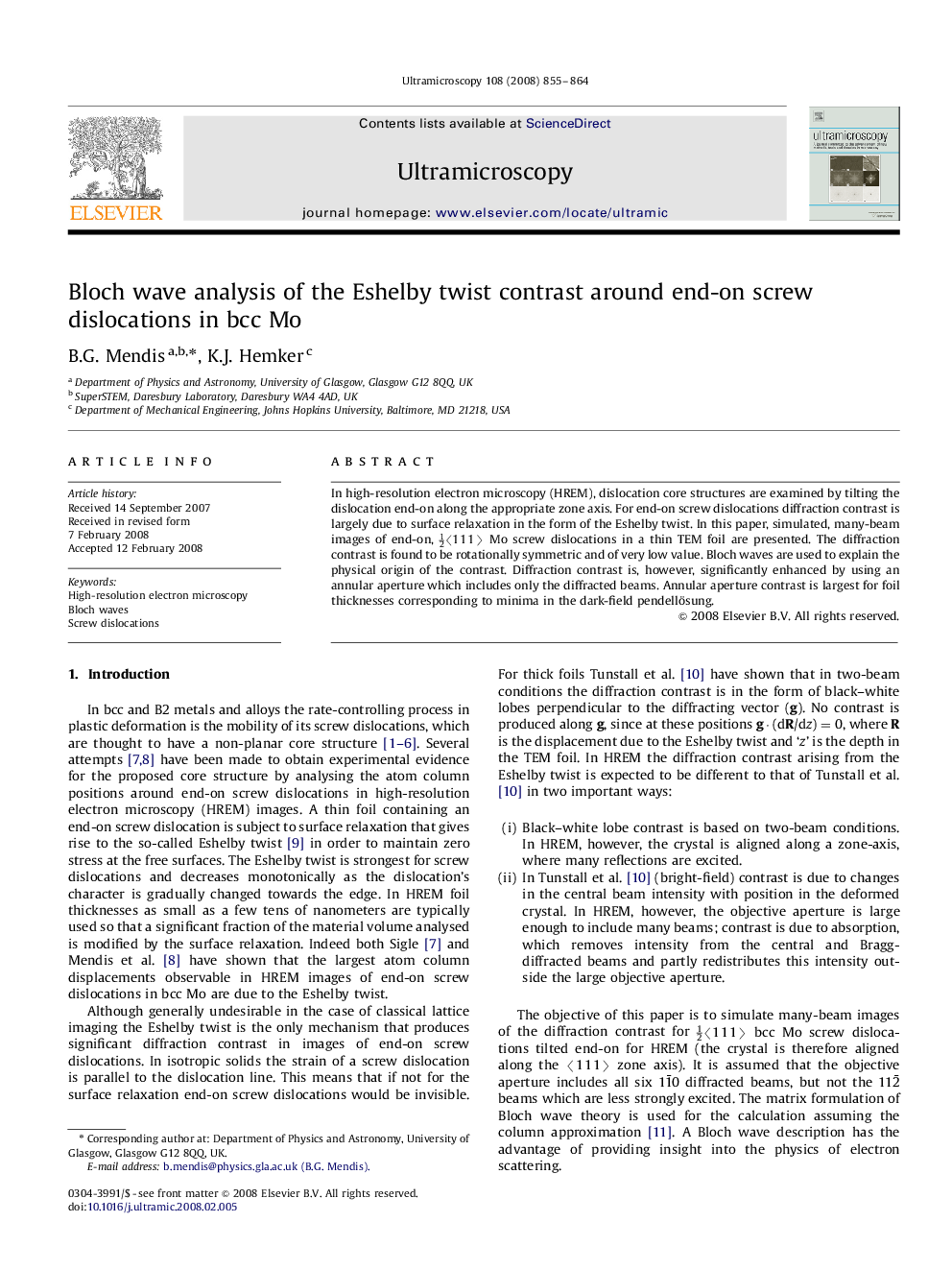| Article ID | Journal | Published Year | Pages | File Type |
|---|---|---|---|---|
| 1679004 | Ultramicroscopy | 2008 | 10 Pages |
In high-resolution electron microscopy (HREM), dislocation core structures are examined by tilting the dislocation end-on along the appropriate zone axis. For end-on screw dislocations diffraction contrast is largely due to surface relaxation in the form of the Eshelby twist. In this paper, simulated, many-beam images of end-on, 12〈1 1 1〉 Mo screw dislocations in a thin TEM foil are presented. The diffraction contrast is found to be rotationally symmetric and of very low value. Bloch waves are used to explain the physical origin of the contrast. Diffraction contrast is, however, significantly enhanced by using an annular aperture which includes only the diffracted beams. Annular aperture contrast is largest for foil thicknesses corresponding to minima in the dark-field pendellösung.
